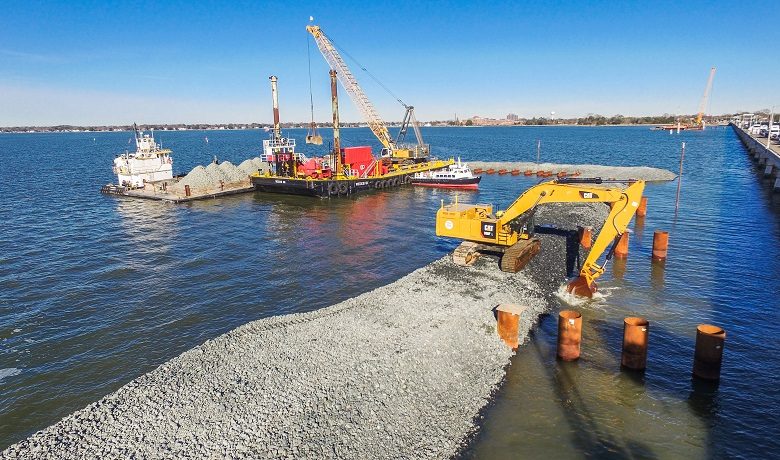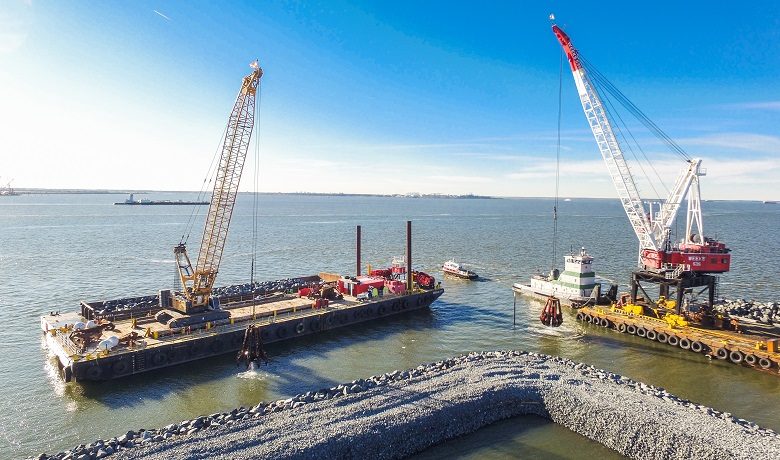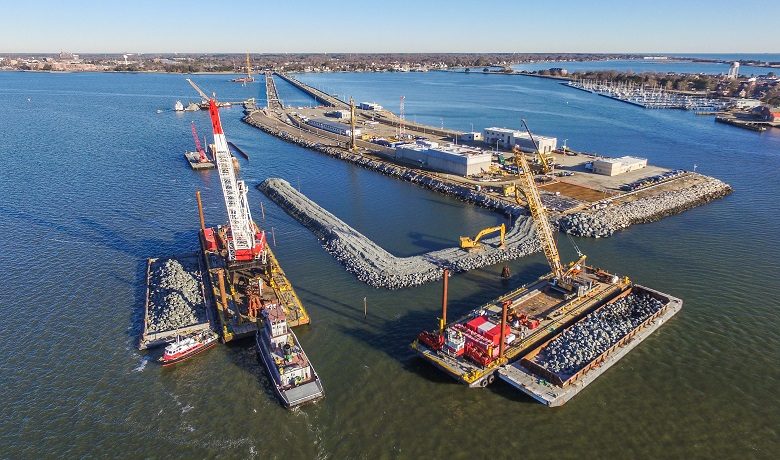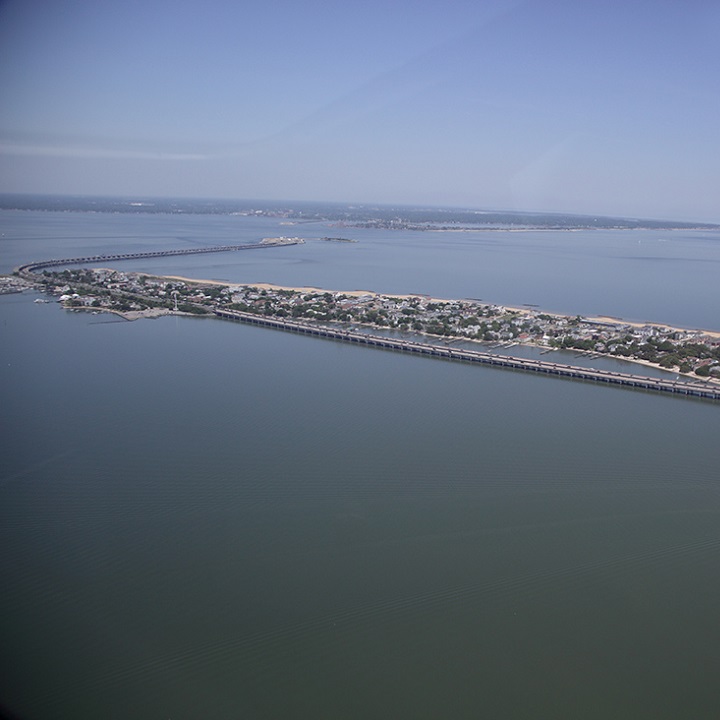Technical overview
Two sea viaducts (traditional structures) of 1km and 1.9km, linking the shoreline and the islands, will replace two existing viaducts which are due to be demolished. A third existing viaduct is set to be widened. In addition to the rehabilitation of the existing tunnels, the islands will be widened to accommodate two new 2.4km-long 2-lane tunnels, which will run parallel to each other and which will be driven using a large-diameter (13.56m) variable density TBM. These are the largest tunnels ever to be carried out by VINCI Construction Grands Projets. Increasing the tunnel depth will make it possible not only to secure the risk profile by ensuring sufficient coverage at start-up, but also to keep the machine well contained, extend the islands back towards the shoreline and eliminate the concrete berms to be poured at sea.
Works at sea will be complex: dealing with the weather involves addressing methods, logistics and supply issues.
In terms of the tunnel excavation, the clay soils found around the artificial islands entail ground reinforcement issues. Given the various soil conditions, the use of a variable density TBM with a convertible cutting head enables tools to be switched under atmospheric pressure, avoids the need for divers and reduces the risks involved.









